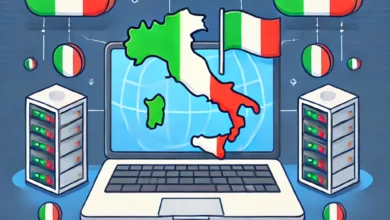Digital Tech Time
In the contemporary landscape, technology has become an integral part of our daily lives. From smartphones that connect us to the world in an instant to sophisticated software that enhances productivity, the influence of digital advancements is profound and far-reaching. This article delves into the various facets of digital technology, exploring its impact on work, communication, and everyday tasks. We will also highlight key trends shaping the future, providing insights into how individuals and businesses can harness these innovations for growth and efficiency.
The Evolution of Digital Technology
Digital technology has undergone a remarkable evolution over the past few decades. In the early days of computing, machines were bulky and limited in capability. However, with the advent of microprocessors, personal computers, and the internet, the landscape began to shift dramatically.
The Rise of Personal Computing
The introduction of personal computers in the late 20th century marked a pivotal moment in digital technology. Devices like the IBM PC and Apple Macintosh made computing accessible to the masses. This democratization of technology paved the way for a new era of productivity and creativity, allowing individuals to create documents, design graphics, and even compose music—all from the comfort of their homes.
The Internet Revolution
The next significant leap came with the advent of the internet. Originally developed for military and academic purposes, the internet transformed into a global network that connects billions of people. The World Wide Web, launched in the early 1990s, opened up new avenues for communication, information sharing, and commerce. E-commerce platforms like Amazon and eBay revolutionized shopping, while social media networks such as Facebook and Twitter redefined how we connect and share experiences.
Mobile Technology and the Smartphone Era
The introduction of smartphones in the late 2000s marked another groundbreaking shift in digital technology. Devices like the iPhone and Android smartphones integrated powerful computing capabilities with mobile connectivity. This revolutionized the way we access information, communicate, and entertain ourselves. With the rise of mobile apps, consumers gained access to services ranging from food delivery to ride-sharing, all at their fingertips.
Key Trends in Digital Technology
As we navigate the digital age, several key trends are shaping the future of technology. Understanding these trends is essential for both individuals and businesses looking to thrive in an increasingly digital world.
1. Artificial Intelligence (AI) and Machine Learning
Artificial intelligence (AI) and machine learning (ML) are transforming various industries by enabling machines to learn from data and make intelligent decisions. From virtual assistants like Siri and Alexa to advanced algorithms used in healthcare diagnostics, AI is enhancing efficiency and accuracy.
Businesses are leveraging AI to automate repetitive tasks, analyze customer behavior, and personalize marketing strategies. For example, e-commerce platforms use AI algorithms to recommend products based on user preferences, significantly improving the shopping experience.
2. Cloud Computing
Cloud computing has revolutionized how businesses store and access data. Instead of relying on physical servers, organizations can use cloud-based solutions to store, manage, and analyze information. This shift has led to increased collaboration, scalability, and cost-efficiency.
Popular cloud services like Amazon Web Services (AWS), Microsoft Azure, and Google Cloud offer businesses the flexibility to scale their operations without the need for significant upfront investments in infrastructure. Additionally, remote work has become more viable with cloud-based collaboration tools, enabling teams to work seamlessly from anywhere in the world.
3. Internet of Things (IoT)
The Internet of Things (IoT) refers to the network of interconnected devices that communicate and share data over the internet. This technology has found applications in various sectors, including healthcare, agriculture, and smart homes.
In smart homes, IoT devices like smart thermostats, security cameras, and appliances can be controlled remotely, improving convenience and energy efficiency. In healthcare, wearable devices monitor patients’ vital signs and transmit data to healthcare providers, facilitating timely interventions.
4. Blockchain Technology
Blockchain technology, originally developed as the backbone for cryptocurrencies like Bitcoin, has gained traction in various industries due to its ability to provide secure and transparent transactions. Its decentralized nature ensures that data cannot be altered without consensus, making it ideal for applications in finance, supply chain management, and digital identity verification.
Organizations are exploring blockchain for its potential to reduce fraud, increase transparency, and streamline processes. For example, supply chain companies can use blockchain to track the movement of goods, ensuring authenticity and minimizing disruptions.
5. Cybersecurity and Privacy
As technology continues to advance, so do the threats posed by cyberattacks. With increased connectivity comes the responsibility to protect sensitive data. Cybersecurity has become a top priority for businesses and individuals alike.
Innovations in cybersecurity include advanced encryption methods, biometric authentication, and artificial intelligence-driven threat detection. Additionally, the implementation of regulations like the General Data Protection Regulation (GDPR) emphasizes the importance of safeguarding personal information.

How Digital Technology Enhances Daily Life
Digital technology is not just about improving business operations; it also significantly enhances our daily lives. From simplifying tasks to providing entertainment, the impact of technology is evident in various aspects of life.
1. Communication
Gone are the days of relying solely on landlines and postal mail for communication. Digital technology has transformed how we connect with others. Instant messaging apps, video conferencing tools, and social media platforms allow us to communicate with friends, family, and colleagues in real time, regardless of geographical barriers.
Tools like Zoom and Microsoft Teams have become essential for remote work and virtual gatherings, enabling people to stay connected and collaborate effectively.
2. Productivity
Digital tools have revolutionized productivity. Applications like Microsoft Office, Google Workspace, and project management software such as Trello and Asana help individuals and teams organize tasks, set deadlines, and track progress.
Additionally, automation tools like Zapier and IFTTT allow users to streamline repetitive tasks, freeing up time for more critical work. For instance, businesses can automate email marketing campaigns, reducing the manual effort involved in outreach.
3. Entertainment
The entertainment industry has been transformed by digital technology. Streaming services like Netflix, Spotify, and Disney+ provide on-demand access to a vast library of movies, music, and shows. This shift from traditional cable television to streaming platforms has changed how we consume media, allowing us to personalize our viewing experiences.
Moreover, the rise of gaming and virtual reality has created new forms of entertainment, providing immersive experiences that transport users to different worlds.
4. Health and Wellness
Digital technology has also made significant strides in health and wellness. Telemedicine platforms enable patients to consult healthcare providers remotely, improving access to care, especially in rural areas. Wearable devices like Fitbit and Apple Watch allow individuals to monitor their health metrics, encouraging healthier lifestyles.
Apps that track fitness, nutrition, and mental health have empowered individuals to take charge of their well-being, making health management more accessible than ever.
The Future of Digital Tech Time
As we look ahead, the future of digital technology promises even more transformative advancements. Emerging technologies like quantum computing and augmented reality hold the potential to reshape entire industries.
1. Quantum Computing
Quantum computing represents a new frontier in computational power. Unlike classical computers that process data in bits (0s and 1s), quantum computers utilize quantum bits or qubits, allowing them to perform complex calculations at unprecedented speeds.
This technology has the potential to revolutionize fields such as cryptography, drug discovery, and optimization problems, providing solutions that were previously unattainable.
2. Augmented and Virtual Reality
Augmented reality (AR) and virtual reality (VR) are redefining how we interact with digital content. AR overlays digital information onto the real world, enhancing experiences in gaming, education, and training. For example, applications like Pokémon Go have popularized AR gaming, allowing users to interact with virtual characters in their physical environment.
On the other hand, VR immerses users in a completely virtual environment, creating opportunities for training simulations, virtual tours, and immersive storytelling.
3. The Future of Work
The future of work is being shaped by digital technology. Remote work, once a necessity during the pandemic, has become a viable long-term option for many businesses. Organizations are adopting hybrid work models that combine remote and in-office work, allowing employees to enjoy greater flexibility.
Moreover, advancements in digital collaboration tools will continue to enhance teamwork and communication, making it easier for geographically dispersed teams to work together effectively.
Conclusion: Embracing the Digital Revolution
As we navigate the digital age, staying informed about technological advancements is crucial. The rapid evolution of digital technology offers endless possibilities to enhance our lives, improve productivity, and foster innovation. Embracing these changes allows individuals and organizations to adapt to an ever-changing landscape, ensuring they remain competitive and relevant.
The power of digital advancements is at our fingertips, ready to transform our daily lives and shape the future. Whether it’s leveraging AI for better decision-making, utilizing cloud services for efficient collaboration, or exploring the latest in virtual reality, the opportunities are limitless.
In conclusion, as we move forward into the future, let us embrace the power of digital tech time and harness its potential to create a better, more connected world. Whether you’re a tech enthusiast, a business leader, or simply someone looking to simplify your life, there has never been a better time to explore the transformative impact of technology.




